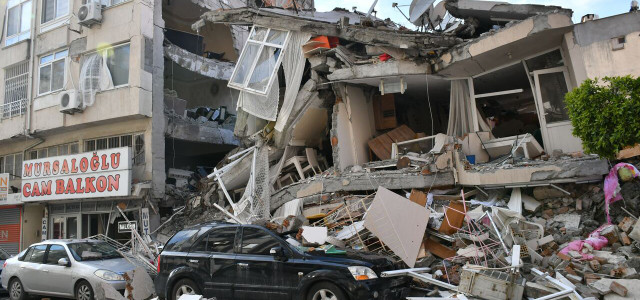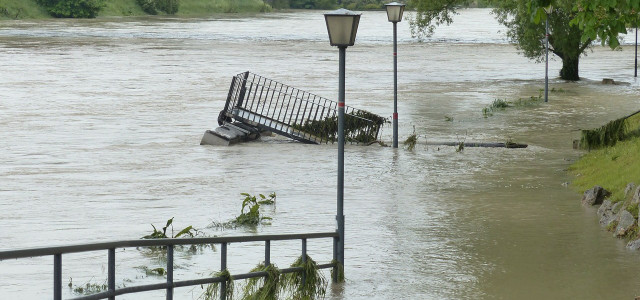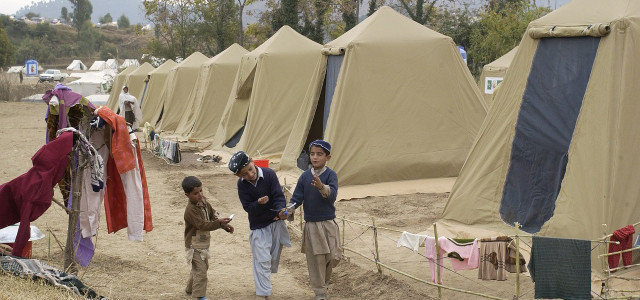In February 2023 a huge earthquake struck in Turkey and Syria causing widespread devastation. We'll discuss where we are a month later and what you can do to help the victims.
In February, 2023 a huge earthquake struck southern Turkey and northern Syria, causing huge devastation and loss of life in both regions. Search and rescue operations were slow to begin and were hampered by the politicized response of the government in Turkey and the conflict situation in Syria. Still, survivors were being pulled from the rubble up to 11 days later, giving some hope to those waiting to be reunited with their loved ones.
In this article, we’ll discuss what happened in Turkey and Syria and what the situation is like in each region today. We’ll also look at the initial responses to the disaster, as well as discussing its economic cost and touch on how the survivors are coping today.
First, let’s start with some background information on why earthquakes happen.
Why Do Earthquakes Happen?

(Foto: CC0 Public Domain / Unsplash / Çağlar Oskay)
The Earth is surrounded by an outer layer called its crust, it is separated into different tectonic plates — think of it like a kind of jigsaw puzzle. These plates are constantly moving slowly, but sometimes there is rapid movement between the plates, or faultlines, when they collide. This movement releases energy, as seismic waves which travel upwards to the surface of the land and cause it to shake.
There are two types of seismic waves, primary (or p-waves) and shear, secondary waves (s-waves). Primary waves travel longitudinally and are the fastest. S-waves travel slower than p waves and their motion is perpendicular to the direction of the wave travel. Earthquakes are measured using the Richter scale which runs from 0 to 8 and above, cracks in buildings can appear at level 4 and buildings can collapse at level 6. The damage done by an earthquake depends on its depth, for example, those closer to the surface usually inflict more damage.
Some research suggests that the weather changes caused by climate change could increase the number of earthquakes globally. A 2018 study found that seismic activity has increased in Alaska in recent years, as has the temperature and melting of permafrost, this could also be due to disturbed energy balance across the planet.
In comparison, a 2009 research paper found that there was a link between typhoon occurrences in Taiwan and the timing of small earthquakes in the area. It is believed the connection is due to reduced atmospheric pressure which allows the faults in the earth’s crust to move more easily and release pressure, causing an earthquake. Another reason could be that the volume of water dumped by typhoons lubricates fault lines and also when landslides occur during periods of high rainfall, earthquakes could happen as the land above gets lighter.
What Happened in Turkey and Syria?



(Foto: CC0 Public Domain / Unsplash / Çağlar Oskay)
In the early hours of Monday 6 February 2023, a 7.8 magnitude earthquake hit an area near the Turkey and Syria border, followed by another strong one and thousands of aftershocks. The epicenter of the earthquake was below Nurdağı, a small town in Turkey, it toppled apartment buildings, schools and hospitals. The earthquake hit 7.8 on the Richter scale at was at a depth of 11 miles, this is quite shallow, which is one of the reasons why this earthquake was so devastating. The death toll has already passed 46, 000 for both countries combined and 1.5 million people have been left homeless, according to the UN, left to face the cold winter in the elements.
In 1999 there was a catastrophic earthquake, in the city of Izmit, northwest Turkey, which killed 17,000 people. After that, the government enforced strict building standards, designed to prevent buildings like apartment blocks from collapsing during strong earthquakes. However, these standards were loosely enforced, with lots of corruption involved from construction companies, this is a contributing factor as to why so many buildings collapsed in the February quake.
Responses to the Earthquake



(Foto: CC0 / Pixabay / Silberfuchs)
The initial response by the Turkish government to the earthquake has been criticized by many as being too slow. Victims in some areas reported receiving no help for days and having to use their bare hands to help free trapped survivors. The Turkish president himself acknowledged the government’s shortcomings in the immediate aftermath of the earthquake and was quoted as saying it was not “possible to be prepared for such a disaster”, saying that damage to airports and roads had hampered relief efforts.
Turkey has a department called the disaster and management authority (AFAD) which are supposed to be prepared to deal with natural disasters in the country, but it appears that due to a lack of coordination and flexibility in planning, their initial response was somewhat slow. There is also criticism that the government politicized their initial response, as they were focused on silencing critics on Twitter and arresting dissenters, whilst victims of the earthquake needed emergency help quickly. Many countries pledged aid relief to Turkey, including the USA, UK and Russia.
The response in Syria was even worse than that in Turkey, due to its continuing political upheaval and humanitarian crisis. The earthquake hit the northwest of Syria, which already had poor infrastructure due to twelve years of conflict. The area was suffering from poor healthcare due to a lack of hospitals, and food and medicines were difficult for many to purchase. A major aid hub for Syria existed in Gaziantep, Turkey, but it was hit badly by the earthquake meaning that responders had to be rescued first, before they could assist anyone else.
Aid agencies initially struggled to get aid into Syria due to closed border crossings in rebel and government-held areas, with them pleading for all border crossings to be opened temporarily. Several countries pledged aid to Syria, including China, Russia and the UAE.
How Are Things for Those Affected by the Earthquake, Today?
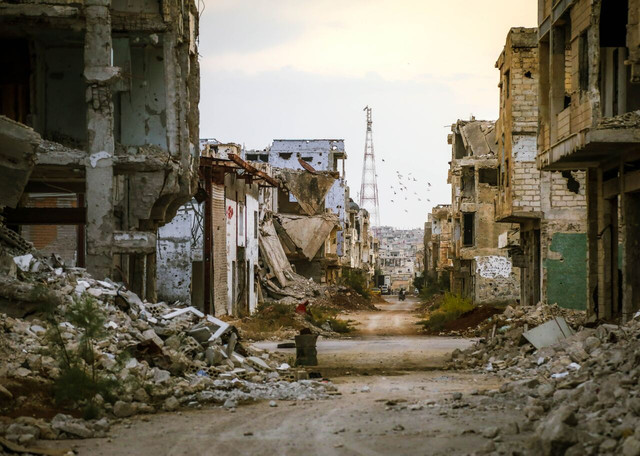


(Foto: CC0 Public Domain / Unsplash / InsertPhotographerName / Mahmoud Sulaiman)
As of the start of March, more than 850,000 children have been displaced by the earthquake in Turkey and Syria and 1.9 million people remain in temporary shelters in Turkey and 500,000 people in Syria are homeless. This includes 260,000 pregnant women across both countries who need essential health services and maternity care as many hospitals and clinics have been reduced to rubble in the earthquake. Women in these areas also now lack contraception and reproductive health services, which could cause further health problems in the future.
Women and girls face further dangers after disasters, because social security and protection services break down, meaning they have nobody to turn to during times of need and may become victims of abuse and exploitation. According to a report by World Vision, women, children and young adults in Syria were already experiencing high numbers of suicidal thoughts. It is expected that after a disaster, these mental health issues will increase.
What is the Economic Damage?
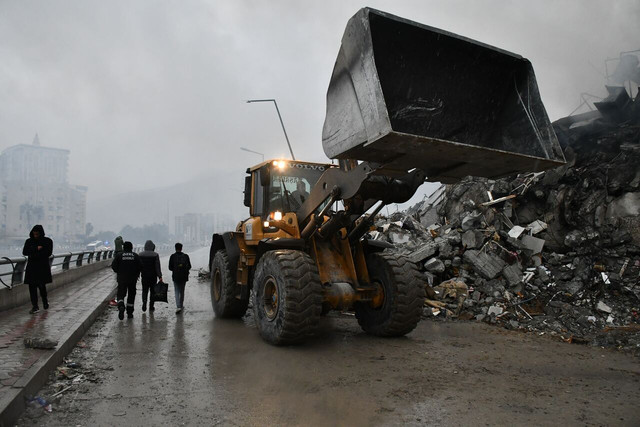


(Foto: CC0 Public Domain / Unsplash / Çağlar Oskay)
As previously mentioned, thousands of buildings were reduced to rubble in the earthquake. This includes apartment buildings, houses, hospitals and schools. According to a report by the world bank, it is estimated that the total damage in Turkey is equal to $34.2 billion. A similar report by Relief web estimated the total impact of the earthquake in Syria at $5.2 billion and recovery and reconstruction there will cost $7.9 billion.
There is also an environmental cost, the UNDP estimates that the disaster has created between 116 million and 210 million tons of rubble. This will all need to be cleared to make way for construction of buildings again. It is possible that some of the waste can be sorted and recycled, according to the UNDP, rather than going to landfill.
You may be wondering how you can help the victims of the earthquake. There are numerous organizations collecting donations across the US, including: The Disaster Relief Emergency Fund from the red cross and red crescent society, The Union of Medical Care and Relief Organizations who are directly raising money for the Turkey and Syria earthquake and Islamic Relief, a faith based organization who have a specific fund for the Turkey/Syria earthquake.
Read more:
- How Does Fracking Work? Legality, Financial and Environmental Concerns
- What Is Environmental Degradation?
- What Is Ecological Succession? Definition, Examples and Types
Do you like this post?






